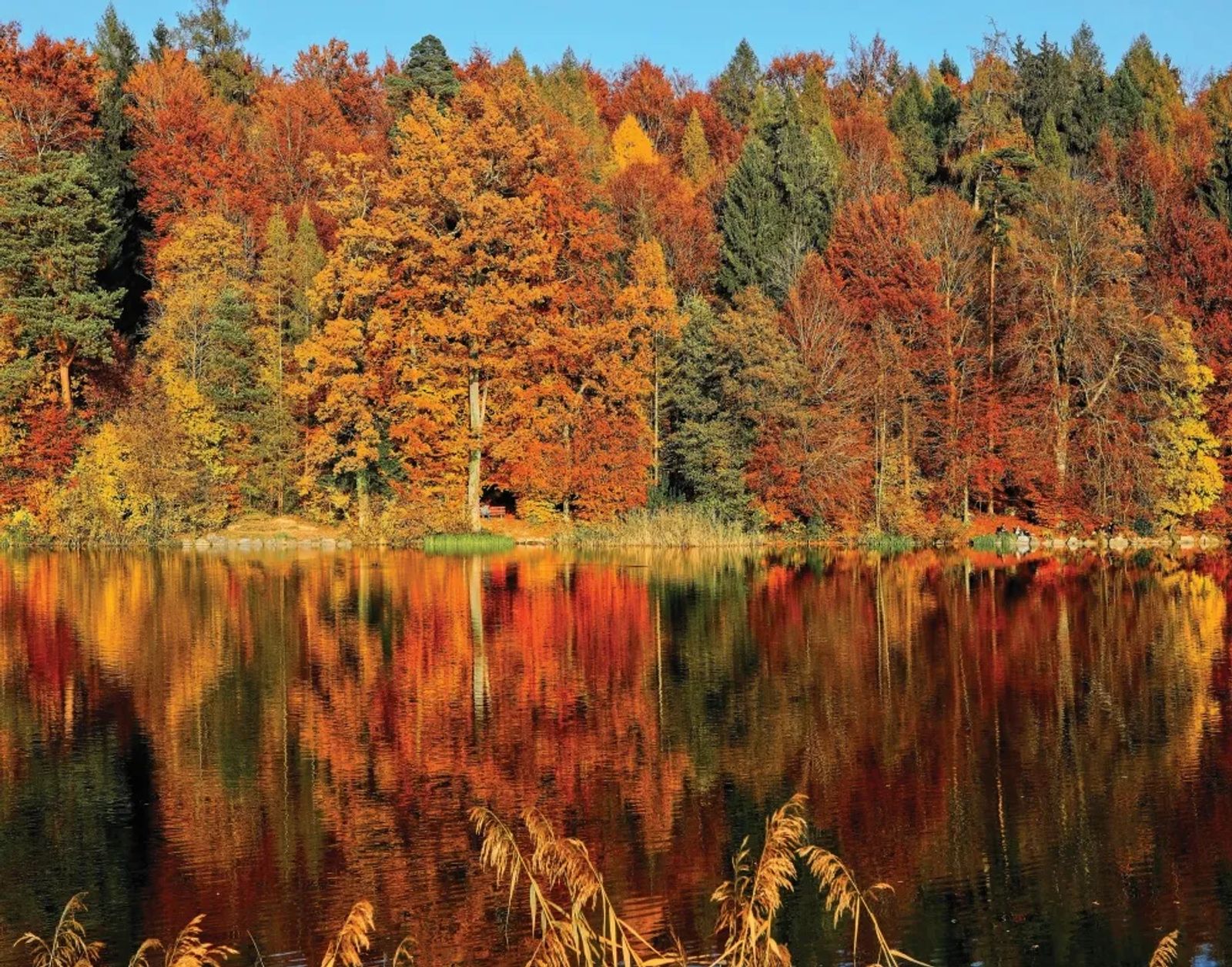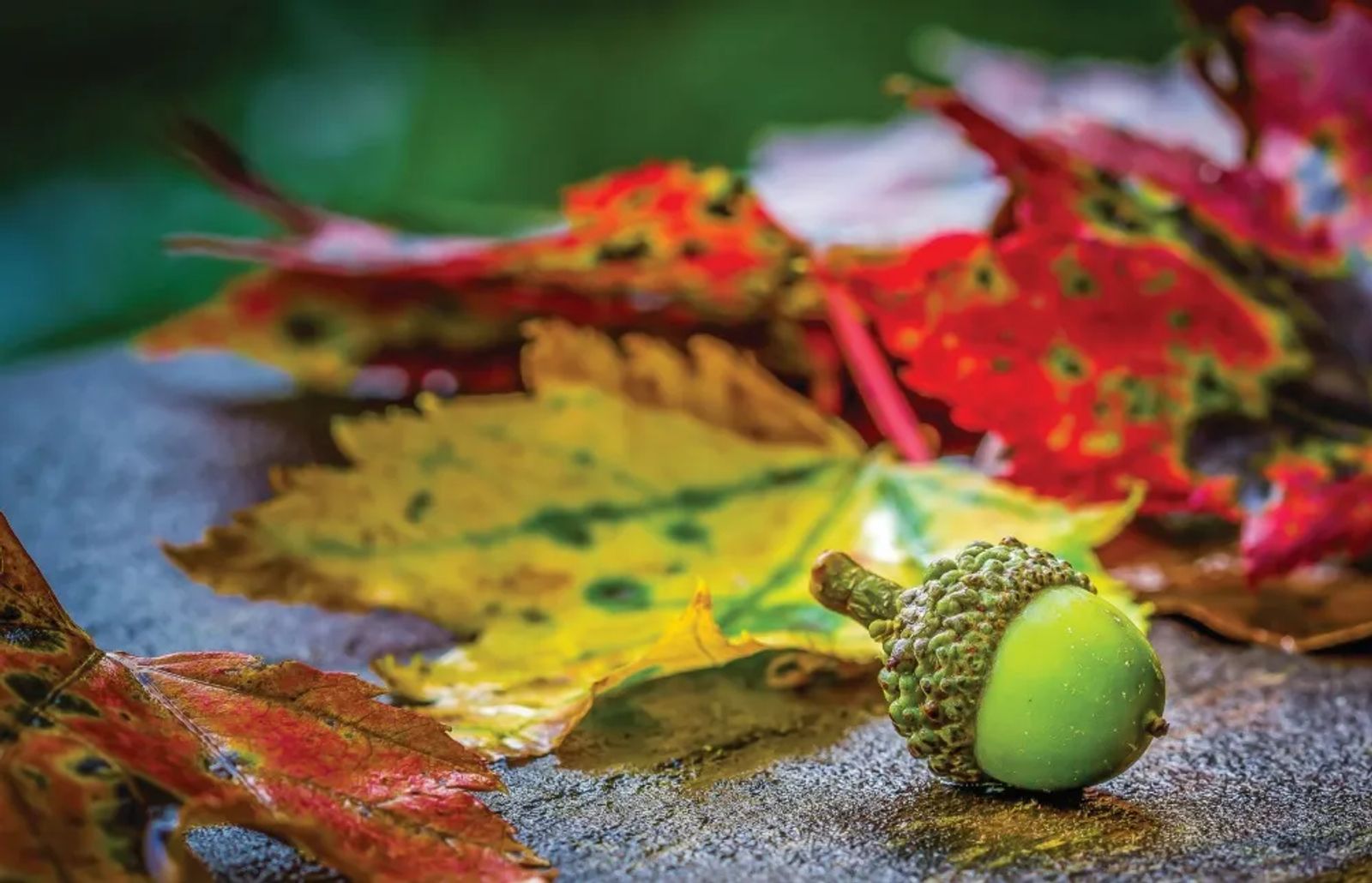
Can You Be-Leaf these Colors?
September 1, 2020 | by stephanie hobby
It’s arguably one of the best offerings of fall: tree branches exploding with color in the delightfully crisp air. But why do leaves change color this time of year? We all know that it happens, but what triggers it? Is the color predetermined, or is there something else at play?
Fall leaves in Montana can be a bit of a toss-up. Some years, we have a stunning display of a range of autumn hues, while in other years, green leaves just turn brown and blow away, seemingly overnight. So what’s the deal?
According to Dr. Jason Comer, Assistant Professor of Botany/Biology at Montana State University - Billings, trees take their cues from two main factors: temperature, and how much sunlight they soak up.
But to understand why temperature and sunlight are important, we should have a quick biology refresher. Leaves are a bit like solar panels for a tree; they absorb the sun's rays and carbon dioxide from the air and convert them into sugars for the tree's food through photosynthesis. The green-pigmented chemical chlorophyll, housed in structures called chloroplasts, is responsible for photosynthesis. Plants have an abundant supply of it, giving plants their green hues.
As the temperatures start to drop, and days start getting shorter, trees begin to conserve their resources by shifting away from growing and maintaining leaves. This planned degeneration is called senescence. Dr. Comer likens it to a cost-benefit analysis: if the tree has to start using more energy to generate and care for leaves than what it's getting in return, senescence kicks in, and the tree begins preparing to shed its foliage. Chloroplasts begin to deteriorate, releasing chlorophyll, which also breaks down.
As the green pigment fades, it gives other pigments the chance to shine through. "They're accessory pigments that help to capture slightly different wavelengths of light than chlorophylls," Dr. Comer explains. "They're actually there all the time; they just get masked by the green pigment, the chlorophylls." These other pigments come from chemicals called carotenoids (which have yellow and orange tints) and anthocyanins (which are red or even purple). Sugar content has a role in what color a leaf will be - the more sugar, the more anthocyanin it will have, which is why sugar maples in places like Vermont turn red, and why cottonwood tree leaves in our region are more likely to turn yellow.
While those beautiful leaves that we celebrate are actually on a march toward their own death, it's not sad; plants need this cycle to stay healthy. If you were to take, say, a maple tree, and plant it in a lush rainforest near the equator, in optimal conditions where the temperature and amount of sunlight were pretty constant year-round, the tree would actually fail to thrive. "They need that rest period, kind of like how we need to sleep at night. Otherwise, it just throws off their internal workings," Dr. Comer said.
Whether we get a great show of autumn colors or just kind of a dud season depends on how that cycle goes that year. Places and years with a gradual temperature shift, with lots of cool, sunny days, will result in brighter colors that last longer. This explains why leaves in Montana are a bit more unpredictable than the leaves in other places around the U.S. We all remember years where it seemed like we skipped fall entirely and jumped straight to winter. The leaves just ended up in gross, messy piles in the yard.

Dr. Comer says it’s a bit like putting a can of soda in your freezer; when temperatures drop dramatically, the cells in some species' cell walls will actually explode, leaving the internal structure of the plant mushy, and the leaves will just turn brown and die. Plants and trees with stronger cell walls will fare better color-wise. So when the temperatures gradually dip, and there are lots of sunny days, the cell walls stay stronger for longer, and colors can change more evenly, giving those carotenoid and anthocyanin chemicals the chance to stick around for up to a month before the tree gets really serious about settling in for the winter and shedding its foliage.
Aaand Action!
An easy and fun way to understand the pigments within leaves is to do paper chromatography, which gives you a closer look into some of those hidden pigments.
You’ll need: at least one leaf, and others if you want to observe the differences, a solvent like rubbing alcohol or acetone, a coin, and filter paper (a coffee filter works great.)
Dr. Comer uses spinach when he does this demonstration with students in his Intro to Biology course since spinach leaves are relatively easy to break down.
Rub a coin over a leaf on top of the filter paper to transfer the pigments to the paper, then dab some of your solvent over the paper. The solvent will separate the colors so that you can observe some of those lesser-seen pigments. The pigments are actually differently sized at the molecular level, which is why they separate out; chlorophylls are larger molecules, so they won't move as far as the smaller and more nimble carotenoids. If you want really good results, Dr. Comer encourages you to mash up the leaves in the solvent and then paint it onto the filter paper.
To really monitor this year's color change in action, you could do this same experiment several times with the same tree throughout the season and compare the results. You could even try to predict what color a leaf will turn based on what you're seeing in the filter paper.
Have fun!
Originally printed in the September 2020 issue of Simply Local Magazine
Never miss an issue, check out SLM's digital editions here!





